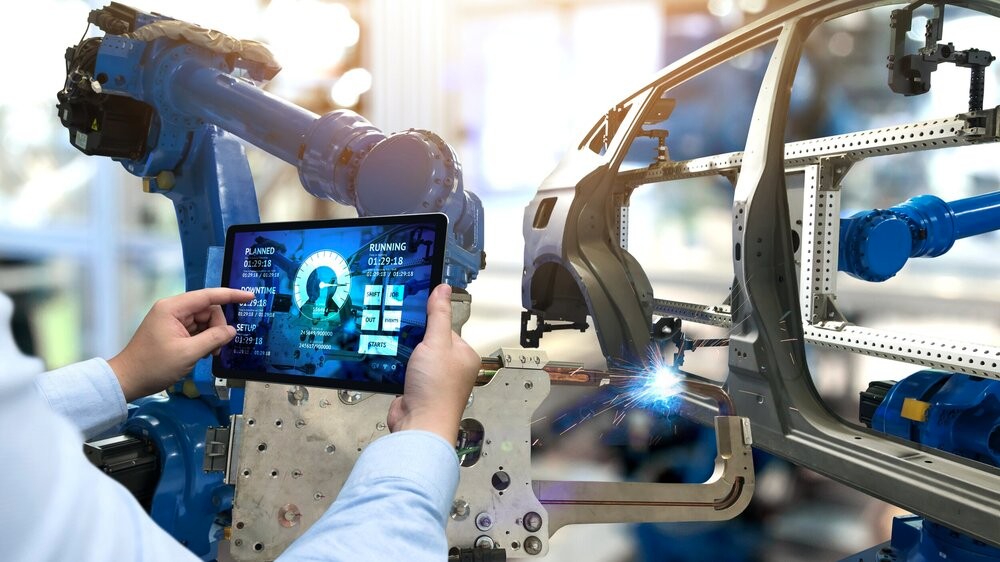
We help our clients avoid unexpected downtime (and the associated costs and customer service impacts) so they can ensure their business is running smoothly. To do that, IFPM Institute focuses on maximizing asset performance. Our strategy includes advanced planning and predictive maintenance, which focuses on maximizing the value of capital through efficiency upgrades, optimal utilization of equipment and people, and effective budgeting and forecasting. In particular, predictive maintenance uses data to determine when a physical asset requires maintenance work. Based on this data, our systems determine whether some form of corrective action is needed in order to address potential issues with the asset before they occur. While some industries are already taking advantage of these benefits in varying degrees, most companies still need help to realize their project’s full potential.
Predictive maintenance:
Predictive Maintenance is the fusion of operational data collection and analysis with asset performance data to help you make better decisions about how your assets should be used in order to reduce operating costs, increase equipment life and enhance safety.
Predictive maintenance allows you to identify opportunities for timely repairs, reduce unplanned downtime, and keep your assets in good working order. By tracking operational data from sophisticated sensors and analytics, we help you pinpoint the best time to conduct preventative maintenance tasks before failure occurs. The Predictive Maintenance solution can provide visibility into the condition of any asset and alert you when it requires attention, speeding resolution times and reducing downtime.
Wouldn’t it be great if you could predict wear and tear on your fleet? IFPM Institute can with our predictive maintenance definition.
Reasons to include productive maintenance:
Predictive maintenance is a method of identifying potential equipment problems before they occur and taking steps to prevent them. The reasons for performing predictive maintenance include cost savings, time savings, safety and/or environmental preservation, and in some cases increased equipment reliability. Predictive factories help companies meet ISO 14001 standards.
Predictive maintenance can help keep your machinery functioning at its highest level and also extend the useful life of a machine by adapting repair techniques to equipment’s accumulated operational history.
Predictive maintenance management in the cloud can help a lot with economic impact and profitability.
Predictive maintenance management in the cloud allows you to improve the overall productivity of your operation and capitalize on your investment.
It is more sophisticated than simple predictive maintenance management systems because it relies on big data analysis. In addition to being accessed via browser, there are dedicated apps for iOS and Android devices that allow you to have access to your data on the go if required.
Areas of use predictive maintenance
It’s no secret that the industrial sector is growing rapidly. That makes predictive maintenance even more important to manufacturers than ever before.
Manufacturing is a huge industry, and has many needs for Predictive Maintenance Definition. For instance, the aerospace industry uses batteries that are recharged by solar panels attached to satellites orbiting the earth. These satellites require batteries in order to keep from losing power from the elements and thus being unable to transmit information back to earth. They need to be inspected and readjusted periodically so they don’t fail during a time of high demand.
Disadvantages of Predictive maintenance:
Predictive maintenance systems offer an array of potential benefits, but also many disadvantages. In this article, four systems capabilities are discussed as well as a brief look at the three stages of implementation and an explanation of how two key drivers can affect organizational adoption and implementation.
If it were not for the big data era, predictive maintenance would have to be drawn up in a very complicated way. It is time-consuming to perform the time-consuming tasks in a closed loop and detect abnormal behavior of the equipment.
Predictive maintenance Definition uses analytics to measure machine vibration and key other data points to predict when a machine will fail. While this maintenance method may seem smarter than other techniques, predictive maintenance can cost more as well as have a longer downtime compared to scheduled maintenance.
For most, it is a common misconception that predictive maintenance saves money. This is due to many factors. For one, companies may expect a decrease in labor costs since they will not be spending as much time performing repairs/scheduled maintenance. However, due to the increase in diagnostic and repair system costs, their overall maintenance costs may actually go up.
The many secrets to improve manufacturing and production, including predictive maintenance are available for you through our business.






